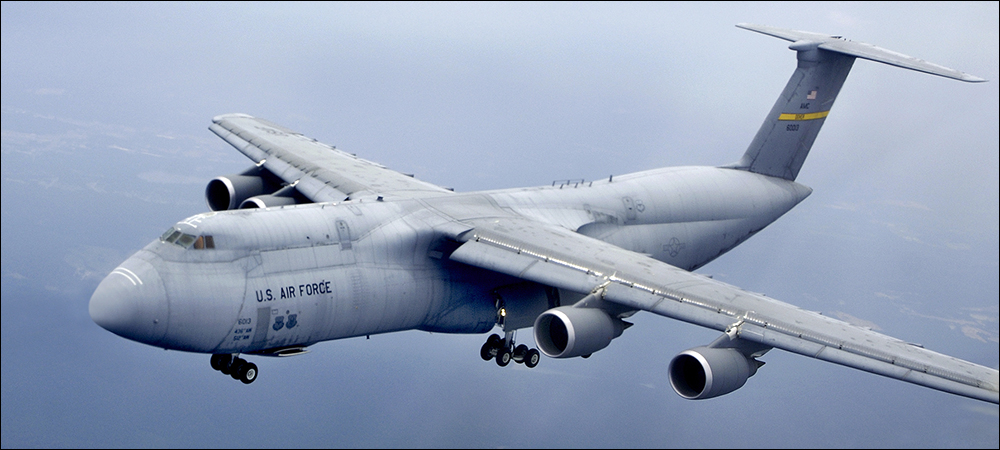- Building on an Existing RTLS Solution
- Applying MotionWorks for More Functionality
- Adding Passive UHF RFID to RTLS Tech
Oct 04, 2022Technology solutions provider CDO Technologies is upgrading and expanding on a real-time locating system (RTLS) for the U.S. Air Force's Global Enterprise Tracking (AFGET) solution as part of a $6.6 million contract. CDO Technologies and its partner, Zebra Technologies, are teaming up to provide more effective automatic-identification technologies (AIT) to modernize Air Force operations by making them more efficient, with improved asset visibility, and ultimately to support mission readiness.
With the contract, the AFGET solution is aimed at improving the agency's existing proprietary active RFID-based RTLS solution at its Air Force Sustainment Center and Air Force Materiel Command locations at Robins Air Force Base (AFB), Tinker AFB, Hill AFB and Davis-Monthan AFB. As part of the contract, CDO will assess the existing system and ensure full visibility across the required coverage areas, as well as provide integration, system operations, and help desk and training services. In addition, CDO will help to expand technology use at all four bases, as well as enhance the software and hardware already in place.
The RTLS technology at the bases, where aircraft are parked and maintained, consists of an RFID receiver infrastructure to capture tag transmissions as assets move around the facilities, along with sensors and active RFID tracking tags, according to Don Ertel, CDO Technologies' senior VP of operations. CDO provides technology-based business solutions for the commercial sector, as well as for military and government agencies. The company, located in Dayton, Ohio, has been directly involved in the design, development, deployment and sustainment of a variety of solutions since its founding in 1995, Ertel says. The majority of its projects are not AIT-focused, he notes, though the company done a lot of AIT work in the past few years.
Building on an Existing RTLS Solution

Don Ertel
The AFGET project is focused on automating the tracking of high-value assets, such as the tools and equipment required to service and maintain Air Force aircraft. Thousands of active RFID tags are attached to assets to track them across the four sites. Those items could include light boxes that illuminate the area, tugs to pull aircraft, and generators—all of which can be moved around flight lines (the area around the hangars in which aircraft are stored and serviced). By transmitting information to area receivers at each base, the system provides a real-time view into the locations of large items in the Air Force's maintenance hangar areas.
"Their key interest is just knowing where things [like their wheeled vehicles] are," Ertel explains, as they are moved around a facility. For instance, if a worker leaves a piece of equipment at a specific location upon ending their shift for the day, then returns the next day to find it gone, the subsequent search for that asset can be time-consuming. Traditionally, personnel used pen and paper or white boards, on which details about a piece of equipment and its location could be written down. That manual process, however, was both time-consuming and inefficient.
Several years ago, the Air Force deployed an RTLS solution at the four bases, leveraging Zebra software. The system did not provide full coverage of the flight line areas, however, and since the collected data was sometimes unreliable, the solution's benefits were limited. Therefore, CDO is now providing services to ensure the existing equipment is again operational. "If there is equipment that needs to be replaced, we will replace that," Ertel says, noting that the majority of the infrastructure will be reconfigured and reconnected.
Applying MotionWorks for More Functionality
Most of the existing tags are already in place on assets, Ertel reports, and CDO plans to add RFID tags to new equipment as it comes in or as tags need to be replaced. The work is already underway. CDO has been contracted with the Air Force for about two-and-a-half months, with expansion taking place at all bases concurrently. One early activity, he says, involves conducting site surveys "to make sure they're getting the level of coverage that they want."
To date, the bases have been unable to identify areas lacking good network coverage, because the technology has not been consistent enough to measure that. "They don't have a good set of heat maps right now from the existing system to know that they're getting coverage everywhere," Ertel states. CDO plans to deploy Zebra's MotionWorks solution to allow for better coverage and enable more features to provide data sets regarding alerts, real-time location information and historical data.
For CDO and Zebra, Ertel says, the project's greatest challenge will be to replace the older legacy software. The introduction of new software requires a process of certifying that it can safely run on the Air Force network, which necessitates security and vulnerability testing. Once this is completed, he adds, MotionWorks will operate within the USAF's existing network and be integrated with its internal systems. Migration to the newest software is likely to take the better part of the year to complete the necessary security testing.
The project will include the addition of new assets to the solution, in order to enable the Air Force to manage lower-value assets. In that case, CDO will apply passive UHF RFID tags to smaller tools and other items, as well as deploy a combination of UHF RFID readers and fixed reader portals to interrogate the unique ID numbers encoded on those passive UHF tags. With a UHF RFID tag on each item, the IDs can be linked to data about the corresponding assets in MotionWorks, along with the existing active RFID-based data being stored for the high-value assets being tracked in real time.
Adding Passive UHF RFID to RTLS Tech
As the active RFID-tagged items move, their location is identified in real time, and the software displays those locations, along with each item's history, for those authorized to view that data. The UHF RFID tags, on the other hand, could also be viewed in the AFGET solution. Every time the tags are read via a handheld reader or pass through a reader portal, each tagged item's status could be automatically updated. In that way, for instance, users could view the building in which an asset has entered or exited, along with when that took place.

Lockheed's 247-foot-long C-5 Galaxy aircraft
Additionally, RFID readers could be deployed in such a way as to create zones within buildings. The hangars are large, with some built to house Lockheed's 247-foot-long C-5 Galaxy aircraft, so zones would be necessary to narrow the search for a specific tagged item. The MotionWorks RTLS solution comes with an app that those onsite can view on a tablet while seeking a particular piece of equipment. "If [an individual] has that level of access," Ertel says, "they would be able to query where a particular asset is, or a particular type of asset." The system could send alerts or updates, depending on the business rules that could be programmed into it.
With the technology in place, Ertel reports, the Air Force is poised to gain multiple benefits. The RTLS solution is intended to reduce labor costs by freeing up worker time that would otherwise be spent searching for tools. The solution could also reduce inventory costs by eliminating the requirement to overstock goods that frequently end up missing or are difficult to find.
Over time, the agency plans to incorporate more of the business-process rules available via MotionWorks. These could, for example, enable the automatic tracking of servicing records to reduce maintenance, since preventive maintenance would be provided more reliably on time and on schedule. "I think when they move to MotionWorks," Ertel states, "they'll see an increase in those efficiencies."
Key Takeaways:
- The multi-million-dollar contract is intended to upgrade existing RTLS technology at four Air Force bases to provide reliable location data for thousands of assets.
- The next step will include the tagging of smaller or lower-value equipment and tools with passive RFID for a hybrid system managing more assets.

